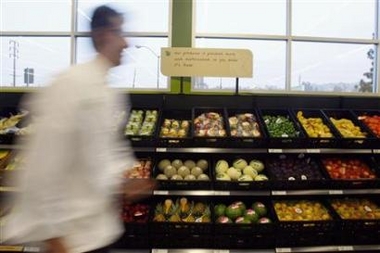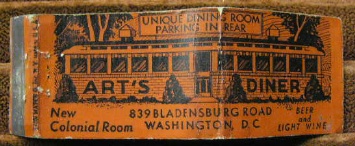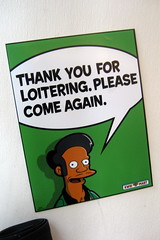Pushback against the 24 hour/creative city
(Flickr photo by wallyg.)
In the Mount Vernon neighborhood in Baltimore, at the location of a defunct restaurant in a reasonably prominent location on Charles Street, 7-11 proposes to open a 24 hour store. Residents have resisted, see "Bid to block 7-Eleven in Mount Vernon falls short" and "Mount Vernon activists decry plan for 7-Eleven" from the Baltimore Sun. In response to their opposition, a City Councilmember has introduced legislation barring stores from being open between 11 pm to 5 am in "historic districts." See "Bill introduced to block Mt. Vernon 24-hour store " from the Sun as well as these letters in response:
-- 24-hour store boosts the area's vitality
-- The wrong location for convenience store
-- 7-Eleven would sully Mount Vernon Square
-- New convenience store could add to crime
-- A blight on charm of Mt. Vernon Square
I think it's fair to say I am a fervent preservationist. At the same time, I balance co-equal concerns of commercial district revitalization, neighborhood vitality and urban competitive advantage, and optimal mobility.
Such legislation misuses preservation.
Ironically, as one thread of the urban narrative is creativity, diversity, and innovation (see the work by Jacobs -- Death and Life of Great American Cities, Economy of Cities, Cities and the Wealthy of Nations; Richard Florida -- Whose Your City, Rise of the Creative Class; and Charles Landry -- Creative City, Art of City Making) it's a struggle to make that happen on the ground.
Interestingly enough, I can think of a couple 7-11s in the Capitol Hill Historic District (DC) that have issues, but by and large, are assets. And in a crunch, and you need something late or early, they are open. In my new neighborhood, there is a 7-11 a couple blocks away, but with the limited amount of business, it has only a couple sorry shelves worth of groceries and bread. Key to success of 24 hour stores anywhere is strong management and a good security plan.
Plus, what about 24 hour pharmacies such as CVS in Dupont Circle and elsewhere?
In fact I have been thinking about how 7-11 is missing a great opportunity to reposition its urban stores around the broader array of goods including prepared foods model pioneered by Sheetz and WaWa (both based in Pennsylvania) and Tesco's new Fresh & Easy concept that is being tested on the West Coast, even the "convenience/grocery" store in the student union at George Washington University is a good model. The trade publication Convenience Store News has many stories about such stores.
Produce aisle, Fresh & Easy. Reuters photo.
Although there has been a discussion in the urban revitalization field over the difference between a 24 hour city and an 18 hour city. It seems the 18 hour city--from 6 am to midnight, might be what's preferred by older residents in the core of Baltimore.
However, one of the revitalization concepts I am working out is planning the retail and service mix of commercial districts by "daypart" and demographic to build and spread patronage throughout the day and into the evening hours.
When planners attempt to plan for different demographics, this allows for a demonstration that different consumer segments are necessary to support a successful commercial district, and that living in a diverse city requires compromise and a willingness to meet the needs of demographics other than your own.
And it is frustrating that DC has very few 24 hour establishments, especially diners, especially diners that might have survived from the 1950s and 1960s. Tastee Diner in Silver Spring is not that good and hardly worth a trek out of the city late at night... (My girlfriend and I idly discuss creating a "Blair Road Diner" with an old diner building on Blair Road near Kansas Ave. or what about a 24 hour diner in Union Station? Etc.)
Labels: commercial district revitalization, retail




0 Comments:
Post a Comment
<< Home